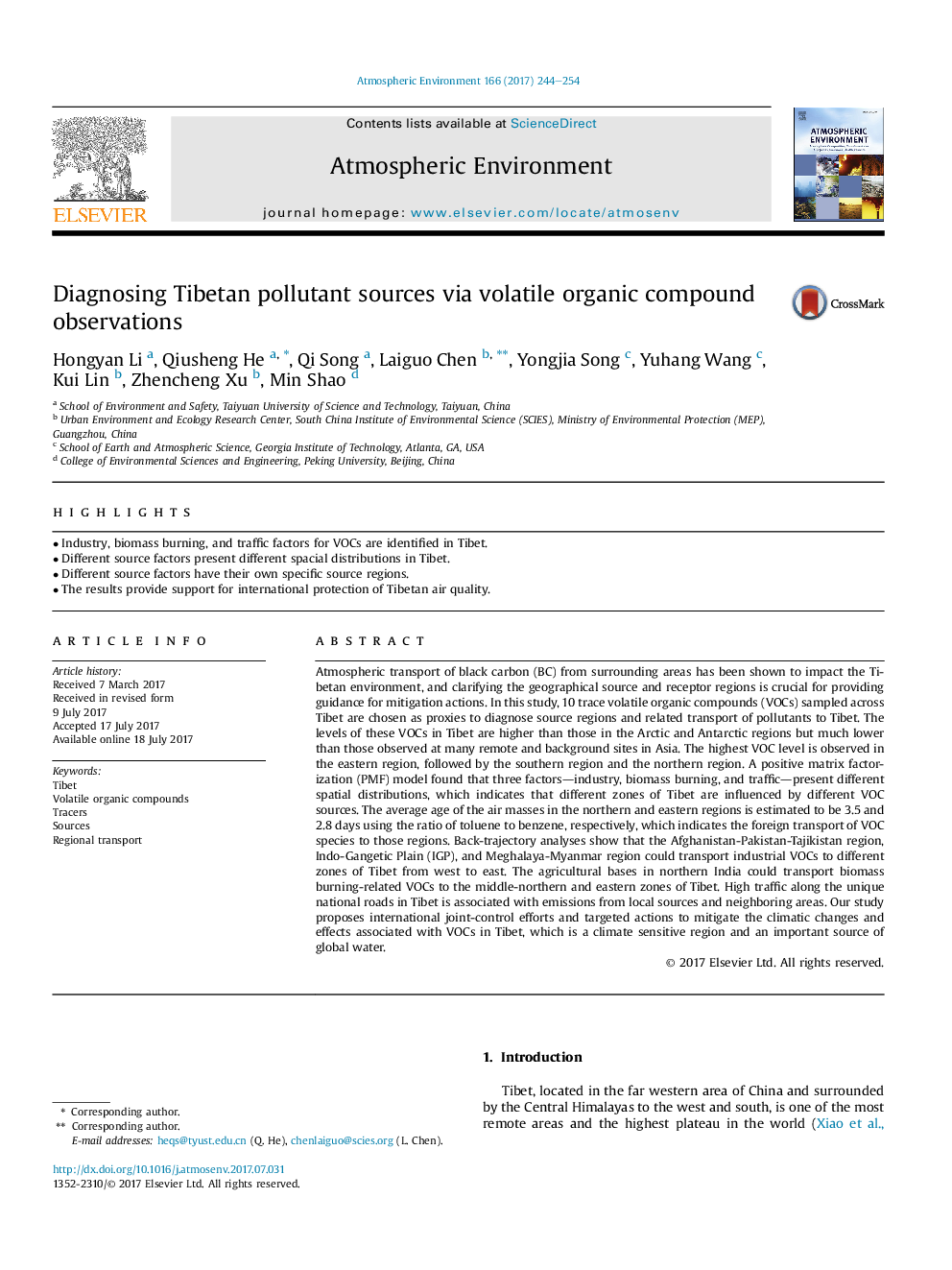| کد مقاله | کد نشریه | سال انتشار | مقاله انگلیسی | نسخه تمام متن |
|---|---|---|---|---|
| 5752848 | 1620308 | 2017 | 11 صفحه PDF | دانلود رایگان |
- Industry, biomass burning, and traffic factors for VOCs are identified in Tibet.
- Different source factors present different spacial distributions in Tibet.
- Different source factors have their own specific source regions.
- The results provide support for international protection of Tibetan air quality.
Atmospheric transport of black carbon (BC) from surrounding areas has been shown to impact the Tibetan environment, and clarifying the geographical source and receptor regions is crucial for providing guidance for mitigation actions. In this study, 10 trace volatile organic compounds (VOCs) sampled across Tibet are chosen as proxies to diagnose source regions and related transport of pollutants to Tibet. The levels of these VOCs in Tibet are higher than those in the Arctic and Antarctic regions but much lower than those observed at many remote and background sites in Asia. The highest VOC level is observed in the eastern region, followed by the southern region and the northern region. A positive matrix factorization (PMF) model found that three factors-industry, biomass burning, and traffic-present different spatial distributions, which indicates that different zones of Tibet are influenced by different VOC sources. The average age of the air masses in the northern and eastern regions is estimated to be 3.5 and 2.8 days using the ratio of toluene to benzene, respectively, which indicates the foreign transport of VOC species to those regions. Back-trajectory analyses show that the Afghanistan-Pakistan-Tajikistan region, Indo-Gangetic Plain (IGP), and Meghalaya-Myanmar region could transport industrial VOCs to different zones of Tibet from west to east. The agricultural bases in northern India could transport biomass burning-related VOCs to the middle-northern and eastern zones of Tibet. High traffic along the unique national roads in Tibet is associated with emissions from local sources and neighboring areas. Our study proposes international joint-control efforts and targeted actions to mitigate the climatic changes and effects associated with VOCs in Tibet, which is a climate sensitive region and an important source of global water.
Journal: Atmospheric Environment - Volume 166, October 2017, Pages 244-254
